MaryAnn Bernal's Blog, page 381
August 28, 2013
History Trivia - St. Augustine dead at 75
August 28

430 Saint Augustine, the great Christian theologian, died at age 75.
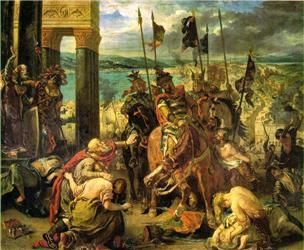
476 the western Roman Empire founded by Augustus in 27 BC ended at Ravenna, where Emperor Romulus Augustulus was deposed by the barbarian leader Odoacer (Germanic chieftain). 4
89 Theodoric, king of the Ostrogoths defeated Odoacer at the Battle of Isonzo, forcing his way into Italy.
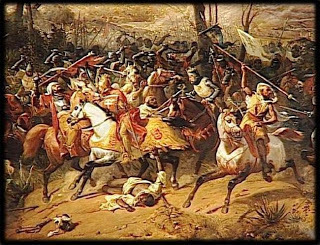
1189 Third Crusade: the Crusaders began the Siege of Acre under Guy of Lusignan.
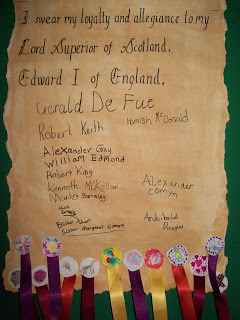
1296 After the Scots were defeated at the Battle of Dunbar, Edward I had the Scottish land owners, churchmen and burgesses swear their allegiance by signing the The Ragman Rolls.

430 Saint Augustine, the great Christian theologian, died at age 75.

476 the western Roman Empire founded by Augustus in 27 BC ended at Ravenna, where Emperor Romulus Augustulus was deposed by the barbarian leader Odoacer (Germanic chieftain). 4
89 Theodoric, king of the Ostrogoths defeated Odoacer at the Battle of Isonzo, forcing his way into Italy.

1189 Third Crusade: the Crusaders began the Siege of Acre under Guy of Lusignan.

1296 After the Scots were defeated at the Battle of Dunbar, Edward I had the Scottish land owners, churchmen and burgesses swear their allegiance by signing the The Ragman Rolls.
Published on August 28, 2013 04:51
August 27, 2013
The Wizard of Notts Recommends: Notts County - giant slayers (nearly!)
Notts County last night defied the odds in a titanic battle against top quality Premier League opposition Liverpool FC, who let down odds on backers at 1/8. The plucky Magpies looked down and out but suddenly began to show the form that everyone knew they were capable of before a goalkeeping error ended the dream in the first period of extra time. We're all proud of you, Notts County!

http://www1.skysports.com/football/live/match/300169/report

http://www1.skysports.com/football/live/match/300169/report
Published on August 27, 2013 16:16
The Wizard's Cauldron: Forgetting Sarah Wallace
The Wizard's Cauldron: Forgetting Sarah Wallace: In the third of (what will come to be known as the Matt Posner interviews), sci-fi fantasist and humanist writer, Sarah Wallace , talks t...
Published on August 27, 2013 15:59
The Phil Naessens Show 8-27-2013 Sam’s Place
http://phillipnaessens.wordpress.com/2013/08/27/the-phil-naessens-show-8-27-2013-sams-place/

Rotowire Fantasy Baseball Expert Nick Falk stops by to give advice and tips to Fantasy Baseball Owners heading to next weeks playoffs, Author Bob Mustin calls in to tell us about Sam’s Place, the pool hall that is the subject of his latest book and The Dream Shake Lead Writer Brandon Davis updates us on the Houston Rockets plus much more on today’s Phil Naessens Show

Rotowire Fantasy Baseball Expert Nick Falk stops by to give advice and tips to Fantasy Baseball Owners heading to next weeks playoffs, Author Bob Mustin calls in to tell us about Sam’s Place, the pool hall that is the subject of his latest book and The Dream Shake Lead Writer Brandon Davis updates us on the Houston Rockets plus much more on today’s Phil Naessens Show
Published on August 27, 2013 04:47
History Trivia - Danes crushed by the Catholic League in Germany
August 27

550 BC Confucius, famous wise man of China is believed to have been born around this date.
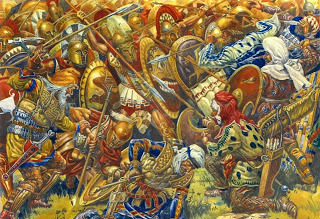
479 BC Greco-Persian Wars: Persian forces led by Mardonius were routed by Pausanias, the Spartan commander of the Greek army in the Battle of Plataea.
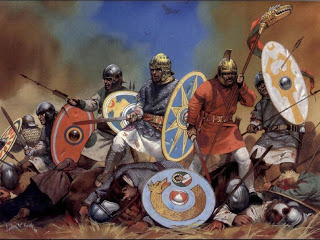
410 The sacking of Rome by the Visigoths ended after three days.
1172 Henry the Young King and Margaret of France were crowned as junior king and queen of England.
1626 The Danes were crushed by the Catholic League in Germany, marking the end of Danish intervention in European wars.

550 BC Confucius, famous wise man of China is believed to have been born around this date.

479 BC Greco-Persian Wars: Persian forces led by Mardonius were routed by Pausanias, the Spartan commander of the Greek army in the Battle of Plataea.

410 The sacking of Rome by the Visigoths ended after three days.
1172 Henry the Young King and Margaret of France were crowned as junior king and queen of England.
1626 The Danes were crushed by the Catholic League in Germany, marking the end of Danish intervention in European wars.
Published on August 27, 2013 04:45
August 26, 2013
The Ruth Chernock Series by Kim Scott - virtual book signing event
http://www.authorgraph.com/authors/KimScottAuthor
 http://www.amazon.com/Kim-Scott/e/B008A57LUE/ref=ntt_athr_dp_pel_1
http://www.amazon.com/Kim-Scott/e/B008A57LUE/ref=ntt_athr_dp_pel_1
This remarkable series begins in 18th century Maine with the hanging of sweet, young Ruth. She stood accused of heinous crimes but was she guilty? This is an incredible story you will never forget!
The four books in this series follow Ruth's family through decades and generations as they endure great tragedy, struggle to remain united. A strong tale of romance, heartbreak, tragedy and survival.Show more Show less
 http://www.amazon.com/Kim-Scott/e/B008A57LUE/ref=ntt_athr_dp_pel_1
http://www.amazon.com/Kim-Scott/e/B008A57LUE/ref=ntt_athr_dp_pel_1This remarkable series begins in 18th century Maine with the hanging of sweet, young Ruth. She stood accused of heinous crimes but was she guilty? This is an incredible story you will never forget!
The four books in this series follow Ruth's family through decades and generations as they endure great tragedy, struggle to remain united. A strong tale of romance, heartbreak, tragedy and survival.Show more Show less
Published on August 26, 2013 10:42
Independent Author Index Book Bio - The Briton and the Dane Concordia by Mary Ann Bernal
http://indaindex.com/book-bio-the-briton-and-the-dane-concordia-by-mary-ann-bernal/
Mary Ann Bernal writes from Omaha, NE, in the USA.Book Bio: The Briton and the Dane: Concordia by Mary Ann Bernal
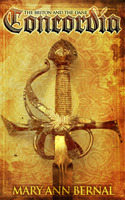 Author: Mary Ann Bernal
Author: Mary Ann Bernal
Book title: The Briton and the Dane: Concordia
Book rating: PG-13 (questionable content for children under 13)
Publisher: Createspace
Book video:
Independent Author Index (IAI): What is your book about?
Mary Ann Bernal (MAB): Travel back in time to late Ninth Century Anglo-Saxon Britain where Alfred the Great rules with a benevolent hand while the Danish King rules peacefully within the boundaries of the Danelaw. Trade flourishes, and scholars from throughout the civilized world flock to Britannia’s shores to study at the King’s Court School at Winchester.
Enter Concordia, a beautiful noble woman whose family is favored by the king. Vain, willful, and admired, but ambitious and cunning, Concordia is not willing to accept her fate. She is betrothed to the valiant warrior, Brantson, but sees herself as far too young to lay in the bedchamber of an older suitor. She wants to see the wonders of the world, embracing everything in it; preferably, but dangerously, at the side of Thayer, the exotic Saracen who charms King Alfred’s court and ignites her yearning passions.
Concordia manipulates her besotted husband into taking her to Rome, but her ship is captured by bloodthirsty pirates, and the seafarers protecting her are ruthlessly slain to a man. As she awaits her fate in the Moorish captain’s bed, by sheer chance, she discovers that salvation is at hand in the gilded court of a Saracen nobleman.
While awaiting rescue, Concordia finds herself at the center of intrigue, plots, blackmail, betrayal and the vain desires of two egotistical brothers, each willing to die for her favor. Using only feminine cunning, Concordia must defend her honor while plotting her escape as she awaits deliverance, somewhere inside steamy, unconquered Muslim Hispania.
IAI: How did you pick the topic for The Briton and the Dane: Concordia?
MAB: My lifelong dream was to write a novel about Erik, the Viking, after having seen such Hollywood blockbusters as “The Vikings,” “The Longships,” and other period movies including “King Arthur,” and “Knights of the Round Table.” When it came time to put pen to paper, Alfred the Great’s reign was the perfect backdrop for my story.
IAI: How is The Briton and the Dane: Concordia different from other books that cover the same or similar information?
MAB: The Briton and the Dane trilogy is an epic adventure, which includes multiple storylines with multiple characters, Concordia being 3-years-old in the final novel.
When we meet Concordia, she has come of age in a turbulent era where women are expected to behave according to societal standards. Her story runs the emotional gamut of love and betrayal, and while her struggle may not be unique, her story is poignant, transcending time.
IAI: What do you like most about writing this book?
MAB: While many decisions have as many consequences, I enjoyed shedding light on the reason why someone did what they did, right or wrong.
Mary Ann Bernal writes from Omaha, NE, in the USA.Book Bio: The Briton and the Dane: Concordia by Mary Ann Bernal
 Author: Mary Ann Bernal
Author: Mary Ann BernalBook title: The Briton and the Dane: Concordia
Book rating: PG-13 (questionable content for children under 13)
Publisher: Createspace
Book video:
Independent Author Index (IAI): What is your book about?
Mary Ann Bernal (MAB): Travel back in time to late Ninth Century Anglo-Saxon Britain where Alfred the Great rules with a benevolent hand while the Danish King rules peacefully within the boundaries of the Danelaw. Trade flourishes, and scholars from throughout the civilized world flock to Britannia’s shores to study at the King’s Court School at Winchester.
Enter Concordia, a beautiful noble woman whose family is favored by the king. Vain, willful, and admired, but ambitious and cunning, Concordia is not willing to accept her fate. She is betrothed to the valiant warrior, Brantson, but sees herself as far too young to lay in the bedchamber of an older suitor. She wants to see the wonders of the world, embracing everything in it; preferably, but dangerously, at the side of Thayer, the exotic Saracen who charms King Alfred’s court and ignites her yearning passions.
Concordia manipulates her besotted husband into taking her to Rome, but her ship is captured by bloodthirsty pirates, and the seafarers protecting her are ruthlessly slain to a man. As she awaits her fate in the Moorish captain’s bed, by sheer chance, she discovers that salvation is at hand in the gilded court of a Saracen nobleman.
While awaiting rescue, Concordia finds herself at the center of intrigue, plots, blackmail, betrayal and the vain desires of two egotistical brothers, each willing to die for her favor. Using only feminine cunning, Concordia must defend her honor while plotting her escape as she awaits deliverance, somewhere inside steamy, unconquered Muslim Hispania.
IAI: How did you pick the topic for The Briton and the Dane: Concordia?
MAB: My lifelong dream was to write a novel about Erik, the Viking, after having seen such Hollywood blockbusters as “The Vikings,” “The Longships,” and other period movies including “King Arthur,” and “Knights of the Round Table.” When it came time to put pen to paper, Alfred the Great’s reign was the perfect backdrop for my story.
IAI: How is The Briton and the Dane: Concordia different from other books that cover the same or similar information?
MAB: The Briton and the Dane trilogy is an epic adventure, which includes multiple storylines with multiple characters, Concordia being 3-years-old in the final novel.
When we meet Concordia, she has come of age in a turbulent era where women are expected to behave according to societal standards. Her story runs the emotional gamut of love and betrayal, and while her struggle may not be unique, her story is poignant, transcending time.
IAI: What do you like most about writing this book?
MAB: While many decisions have as many consequences, I enjoyed shedding light on the reason why someone did what they did, right or wrong.
Published on August 26, 2013 05:46
The Phil Naessens Show 8-26-2013 What Happened to the Washington Nationals?
http://phillipnaessens.wordpress.com/2013/08/26/the-phil-naessens-show-8-26-2013-what-happened-to-the-washington-nationals/

SB Nation MLB Managing Editor Steven Goldman joins host Phil Naessens to discuss Alex Rodriguez getting drilled by Ryan Dempster and Dempsters subsequent suspension, Ichiro Suzuki’s 4000 hit, the Yankees winning a Wild Card, the red hot Los Angeles Dodgers, the NL Central and what went wrong with the Washington Nationals plus much more on today’s Phil Naessens Show

SB Nation MLB Managing Editor Steven Goldman joins host Phil Naessens to discuss Alex Rodriguez getting drilled by Ryan Dempster and Dempsters subsequent suspension, Ichiro Suzuki’s 4000 hit, the Yankees winning a Wild Card, the red hot Los Angeles Dodgers, the NL Central and what went wrong with the Washington Nationals plus much more on today’s Phil Naessens Show
Published on August 26, 2013 04:25
History Trivia - Julius Caesar invades Great Britain
August 26
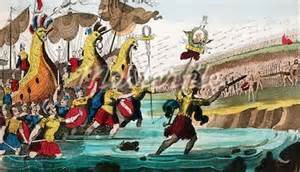
55 BC Julius Caesar and his Roman Legions invaded Great Britain.
1017 Turks defeated the Byzantine army under Emperor Romanus IV at Manikert, Eastern Turkey.
1429 Joan of Arc made a triumphant entry into Paris.
1466 A conspiracy against Piero di Cosimo de' Medici in Florence, led by Luca Pitti, was discovered.
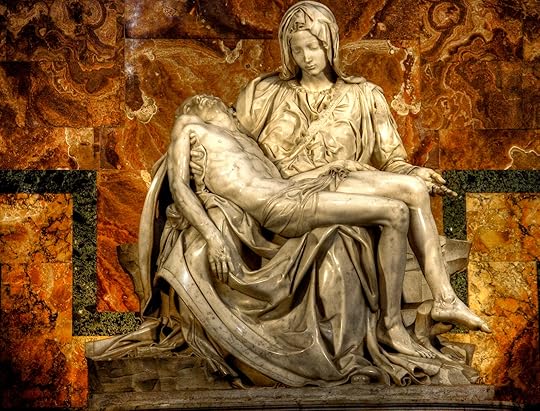
1498 Michelangelo was commissioned to carve the Pietà.

55 BC Julius Caesar and his Roman Legions invaded Great Britain.
1017 Turks defeated the Byzantine army under Emperor Romanus IV at Manikert, Eastern Turkey.
1429 Joan of Arc made a triumphant entry into Paris.
1466 A conspiracy against Piero di Cosimo de' Medici in Florence, led by Luca Pitti, was discovered.

1498 Michelangelo was commissioned to carve the Pietà.
Published on August 26, 2013 04:21
August 25, 2013
University of Bradford, UK, courtesy of Anthea Boylston - An example of cranial trauma from the Battle of Towton.
http://www.the-exiles.org/Article%20Towton.htm
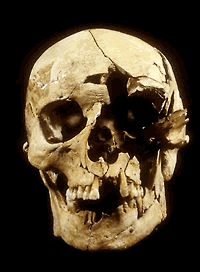
 The Exiles - Company of Medieval Martial ArtistsThe Bloody Cost of Medieval Warfare Skeletal Analysis Shows the Grim Face of Battle
The Exiles - Company of Medieval Martial ArtistsThe Bloody Cost of Medieval Warfare Skeletal Analysis Shows the Grim Face of Battle
On a cold day in March 1461, between 22,000 and 28,000 men were speared, axed, and crushed to death on the battlefield of Towton. This decisive battle in the Wars of the Roses, the English civil war between the Lancastrians and the Yorks, helped win the crown for Edward IV (a Yorkist). The Battle
What transpired at Towton on a snowy Palm Sunday, March 29th, 1461, has ever since been something of a mystery, despite the battle being one of the largest and bloodiest ever fought on English soil. Historically, the battle marked a turning point in the Wars of the Roses that confirmed the Yorkist Edward IV's accession to the throne of England. During the battle and ensuing rout of the Lancastrians, an estimated 22,000 to 28,000 men lost their lives.
The Excavation
Now with a gruesome chance archaeological find in the back garden of a Yorkshire country house this battle can start to be explored on an individual level. In the summer of 1996, builders working on an extension, uncovered 37 skeletons piled one on top of the other. This was a war grave described as "one of the great finds of the century" Its occupants had fallen in this battle that some people describe as the bloodiest battle ever on British soil.
The workmen disturbed a portion of a mass-burial pit during building work at the location of the Towton battlefield (near Tadcaster, North Yorkshire). At the request of North Yorkshire County Council Heritage Unit, a team of osteoarchaeologists and archaeologists from the Department of Archaeological Sciences and members of the West Yorkshire Archaeology Service recovered the mostly complete remains of 43 individuals from the interment which measured 6m x 2m and was only 50 cm in depth.
The application of forensic anthropological techniques for identifying and recording injuries has allowed us to confirm that the individuals from the pit were casualties of an extremely violent encounter. Moreover, they provide a unique glimpse of the personal consequences of battle for some who took part and some insight into the lives that these people led.
Some of the corpses had been horribly mutilated with their ears and noses sliced from their dead bodies and with puncture marks in their skulls, over thirteen in one case. A group of British scientists at Bradford University's Department of Archaeological Science unraveled the bloody and fascinating story behind the massacre. They used bio-mechanical analysis of the bodies, scans and computer reconstructions of the victims.
It was "the bloodiest battle ever fought on British soil," according to Anthea Boylston, who headed the University of Bradford, U.K., team that analyzed the mangled remains of the battle's victims.
One skeleton in particular - known as number 16 - is closely scrutinised for clues. SHANNON NOVAK, a forensic archaeologist, whose work has taken her to the war graves in Croatia, is part of the Bradford University team which pieces together the evidence. Number 16's injuries are brutal - his jaw had been sliced from his face; a sword-slash had cut through the roots of a molar and, almost certainly severed his tongue. He was about 50 when he died; probably a grizzled veteran of continental wars whose body had been slung in the day after the infamous battle. A facial reconstruction by forensic artist, RICHARD NEAVE, revealed a gruesome-looking man.
Most of these individuals had sustained multiple perimortem (around the time of death) injuries from a variety of projectiles and hand-held weapons, many of which bear resemblance to those curated by the National Armouries Museum, Leeds, and dating to the late Medieval period.
In order to document these injuries complete reconstruction of crania was necessary such that the wounds could be sequenced (the process of identifying the order in which blows were delivered and their physical ramifications).
"The skulls [which were in pieces] took six months to reconstruct," said Shannon Novak, the forensic anthropologist from the University of Utah who did the reconstruction and trauma analysis. "We were looking for injury patterns and trying to determine the weapons that made them. We also tried to determine the sequence of wounds."
Wound sequencing is done by interpreting the intersection of radiating fractures that occur in the skull due to trauma. Novak offers the analogy to throwing rocks at glass: "When you throw a rock, in the place where it contacts the glass you get a depression surrounded by concentric and radiating fractures where the glass fails. Throw a second rock, and you get a depression and fractures, but the fractures will follow the path of least resistance and gravitate toward fractures created by the first rock. Studying where these intersections occur allows you to identify which rock 'wound' hit first."
Many of the individuals suffered multiple injuries that are far in excess of those necessary to cause disability and death. From the distribution of cuts, chops, incisions, and punctures, it appears that blows cluster in the craniofacial area, in some cases bisecting the face and cranial vault of some individuals and detaching bone in others. Series of cuts and incisions found in the vicinity of the nasal and aural areas appear to have been directed toward removal of the nose and ears. There are few infra-cranial (torso and limb) injuries, which may suggest that these areas were not targeted, that these individuals were wearing armour, or that they sustained their injuries while in a position that did not allow them to defend themselves. The pattern, distribution, and number of these insults argues for perimortem mutilation. Many were left in a state that would have made identification difficult, even more so as they had been stripped of identifiable weapons and clothing prior to interment (a normal practice in the Medieval period).
"The level of trauma was surprising," said Novak, who has done forensic analysis on victims in Croatia and the United States. "In Croatia, you would see primarily a single gunshot wound to the head. Some of these men from Towton have [up to] 13 wounds to the head. There were also many different types of wounds present on single individuals."
By sequencing the pattern of wounds, they found that in a couple of cases, individuals received severe mutilating injuries after being incapacitated. One man's face was bisected after he was felled by a blow to the back of the head.
By comparing the wounds with historically documented weapons, the team was able to detect and confirm the use of battle weapons such as war hammers, swords, daggers, poleaxes, and maces.
"The skulls had some wounds with distinct shapes," said Novak, "so we worked with weapon profiles [to determine which weapons made which wounds]. Most were square wounds to the head, which are from poleaxes. Because longbows were idealized for that period, there was a tendency prior to analysis to interpret these wounds as longbow wounds."
Novak spent hours in the Royal Armories and the Wallace Collection in England, making silhouettes of the various weaponry known for that time, and then compared them to the patterns found on the skulls.
The team was surprised to find no chest wounds. Although very few people could afford armor to protect themselves, most would have worn padded jackets. The head apparently was targeted. Nearly everyone wore helmets, but they "might have easily been dislodged with a hard blow," said Novak. The skulls of many individuals showed healed head wounds from previous blows.
Armor was distributed according to one's status. Individuals such as lords would have a cache of weapons to give out to the locals. Poleaxes were a common weapon among foot soldiers. Not only were they a deadly weapon, their metal-reinforced poles made them effective in defense. Almost everyone would have carried a single-bladed knife, which was used for eating and cooking as well as fighting, and most would have possessed a broadsword.
In addition to the information gleaned about the men's battle scars, the University of Bradford team also documented histories of injuries on some individuals. Boylston said, "One man had a deeply piercing wound to the mandible, which he somehow survived, and it showed as a healed fracture. We also found trauma to the teeth, from the battle itself, and also previous trauma which suggested [some of the men] were using their teeth to string bows. Some of the men were archers. One skeleton [of an apparent archer] had a lesion on the elbow, such as you find in baseball players."
The battle was not fought exclusively by the youngest and healthiest medieval warriors. There was "a wide age-range" from men of 16 to some who were 50 years old. Though surprising to find elder Englishmen wielding weaponry in the thick of battle, it was common for older men to fight. Said Boylston, "It was part of medieval warfare. Each lord had to bring a retinue of a certain amount of individuals. People had to go and fight for the king as part of their feudal duties."
The general size and robusticity of the individuals from Towton is unusual when compared with other medieval populations. Many of these individuals are more robust (stockier) than the medieval norm, appearing similar to modern professional athletes.
The physical appearance of these individuals, then, may be related to extended periods of strenuous exertion prior to physiological maturity (i.e. in youth). Among these are numerous Schmorl's nodes in the vertebral column (from pressure exerted on the intervertebral discs in heavy lifting), os acromiale of the scapular spine, a condition that is often accompanied by rotator cuff (muscles that stabilise the shoulder) tears, and an avulsion fracture of the humeral medial epicondyle, a condition that develops from throwing (e.g. in projectile use) in more recent juvenile individuals.
One hypothesis to explain this pattern is that these individuals were selected as participants in the battle because of previous experience and training in armed combat from a young age. Some support for this relationship comes from a number of healed injuries, testimony to prior involvement in armed conflict.
Analysis of the Towton assemblage offers a complementary view of medieval warfare to that offered by the chronicles of the Medieval period. Through it, we will attempt to place the Towton individuals within the context of late medieval society and address the effect of late medieval social change on warfare. Far from the chivalrous conflict so often associated with the Middle Ages, we may be seeing early evidence of the brutality more often encountered in the civil wars of the modern era.
The evidence defies all received wisdom about medieval chivalry and battlefield conventions. Was there a religious motive behind these gruesome mutilations? Is this shallow pit part of a larger burial ground, containing, according to some estimates, around 1,000 graves?
University of Bradford, UK, courtesy of Anthea Boylston An example of cranial trauma from the Battle of Towton. The left side of the mandible has a healed blade injury which occurred in a previous violent encounter.
This picture shows a crushing blow has been made to the left had side - possibly a pole axe wound.
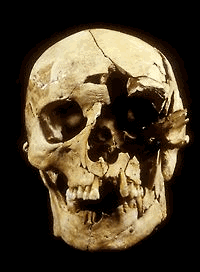

 The Exiles - Company of Medieval Martial ArtistsThe Bloody Cost of Medieval Warfare Skeletal Analysis Shows the Grim Face of Battle
The Exiles - Company of Medieval Martial ArtistsThe Bloody Cost of Medieval Warfare Skeletal Analysis Shows the Grim Face of BattleOn a cold day in March 1461, between 22,000 and 28,000 men were speared, axed, and crushed to death on the battlefield of Towton. This decisive battle in the Wars of the Roses, the English civil war between the Lancastrians and the Yorks, helped win the crown for Edward IV (a Yorkist). The Battle
What transpired at Towton on a snowy Palm Sunday, March 29th, 1461, has ever since been something of a mystery, despite the battle being one of the largest and bloodiest ever fought on English soil. Historically, the battle marked a turning point in the Wars of the Roses that confirmed the Yorkist Edward IV's accession to the throne of England. During the battle and ensuing rout of the Lancastrians, an estimated 22,000 to 28,000 men lost their lives.
The Excavation
Now with a gruesome chance archaeological find in the back garden of a Yorkshire country house this battle can start to be explored on an individual level. In the summer of 1996, builders working on an extension, uncovered 37 skeletons piled one on top of the other. This was a war grave described as "one of the great finds of the century" Its occupants had fallen in this battle that some people describe as the bloodiest battle ever on British soil.
The workmen disturbed a portion of a mass-burial pit during building work at the location of the Towton battlefield (near Tadcaster, North Yorkshire). At the request of North Yorkshire County Council Heritage Unit, a team of osteoarchaeologists and archaeologists from the Department of Archaeological Sciences and members of the West Yorkshire Archaeology Service recovered the mostly complete remains of 43 individuals from the interment which measured 6m x 2m and was only 50 cm in depth.
The application of forensic anthropological techniques for identifying and recording injuries has allowed us to confirm that the individuals from the pit were casualties of an extremely violent encounter. Moreover, they provide a unique glimpse of the personal consequences of battle for some who took part and some insight into the lives that these people led.
Some of the corpses had been horribly mutilated with their ears and noses sliced from their dead bodies and with puncture marks in their skulls, over thirteen in one case. A group of British scientists at Bradford University's Department of Archaeological Science unraveled the bloody and fascinating story behind the massacre. They used bio-mechanical analysis of the bodies, scans and computer reconstructions of the victims.
It was "the bloodiest battle ever fought on British soil," according to Anthea Boylston, who headed the University of Bradford, U.K., team that analyzed the mangled remains of the battle's victims.
One skeleton in particular - known as number 16 - is closely scrutinised for clues. SHANNON NOVAK, a forensic archaeologist, whose work has taken her to the war graves in Croatia, is part of the Bradford University team which pieces together the evidence. Number 16's injuries are brutal - his jaw had been sliced from his face; a sword-slash had cut through the roots of a molar and, almost certainly severed his tongue. He was about 50 when he died; probably a grizzled veteran of continental wars whose body had been slung in the day after the infamous battle. A facial reconstruction by forensic artist, RICHARD NEAVE, revealed a gruesome-looking man.
Most of these individuals had sustained multiple perimortem (around the time of death) injuries from a variety of projectiles and hand-held weapons, many of which bear resemblance to those curated by the National Armouries Museum, Leeds, and dating to the late Medieval period.
In order to document these injuries complete reconstruction of crania was necessary such that the wounds could be sequenced (the process of identifying the order in which blows were delivered and their physical ramifications).
"The skulls [which were in pieces] took six months to reconstruct," said Shannon Novak, the forensic anthropologist from the University of Utah who did the reconstruction and trauma analysis. "We were looking for injury patterns and trying to determine the weapons that made them. We also tried to determine the sequence of wounds."
Wound sequencing is done by interpreting the intersection of radiating fractures that occur in the skull due to trauma. Novak offers the analogy to throwing rocks at glass: "When you throw a rock, in the place where it contacts the glass you get a depression surrounded by concentric and radiating fractures where the glass fails. Throw a second rock, and you get a depression and fractures, but the fractures will follow the path of least resistance and gravitate toward fractures created by the first rock. Studying where these intersections occur allows you to identify which rock 'wound' hit first."
Many of the individuals suffered multiple injuries that are far in excess of those necessary to cause disability and death. From the distribution of cuts, chops, incisions, and punctures, it appears that blows cluster in the craniofacial area, in some cases bisecting the face and cranial vault of some individuals and detaching bone in others. Series of cuts and incisions found in the vicinity of the nasal and aural areas appear to have been directed toward removal of the nose and ears. There are few infra-cranial (torso and limb) injuries, which may suggest that these areas were not targeted, that these individuals were wearing armour, or that they sustained their injuries while in a position that did not allow them to defend themselves. The pattern, distribution, and number of these insults argues for perimortem mutilation. Many were left in a state that would have made identification difficult, even more so as they had been stripped of identifiable weapons and clothing prior to interment (a normal practice in the Medieval period).
"The level of trauma was surprising," said Novak, who has done forensic analysis on victims in Croatia and the United States. "In Croatia, you would see primarily a single gunshot wound to the head. Some of these men from Towton have [up to] 13 wounds to the head. There were also many different types of wounds present on single individuals."
By sequencing the pattern of wounds, they found that in a couple of cases, individuals received severe mutilating injuries after being incapacitated. One man's face was bisected after he was felled by a blow to the back of the head.
By comparing the wounds with historically documented weapons, the team was able to detect and confirm the use of battle weapons such as war hammers, swords, daggers, poleaxes, and maces.
"The skulls had some wounds with distinct shapes," said Novak, "so we worked with weapon profiles [to determine which weapons made which wounds]. Most were square wounds to the head, which are from poleaxes. Because longbows were idealized for that period, there was a tendency prior to analysis to interpret these wounds as longbow wounds."
Novak spent hours in the Royal Armories and the Wallace Collection in England, making silhouettes of the various weaponry known for that time, and then compared them to the patterns found on the skulls.
The team was surprised to find no chest wounds. Although very few people could afford armor to protect themselves, most would have worn padded jackets. The head apparently was targeted. Nearly everyone wore helmets, but they "might have easily been dislodged with a hard blow," said Novak. The skulls of many individuals showed healed head wounds from previous blows.
Armor was distributed according to one's status. Individuals such as lords would have a cache of weapons to give out to the locals. Poleaxes were a common weapon among foot soldiers. Not only were they a deadly weapon, their metal-reinforced poles made them effective in defense. Almost everyone would have carried a single-bladed knife, which was used for eating and cooking as well as fighting, and most would have possessed a broadsword.
In addition to the information gleaned about the men's battle scars, the University of Bradford team also documented histories of injuries on some individuals. Boylston said, "One man had a deeply piercing wound to the mandible, which he somehow survived, and it showed as a healed fracture. We also found trauma to the teeth, from the battle itself, and also previous trauma which suggested [some of the men] were using their teeth to string bows. Some of the men were archers. One skeleton [of an apparent archer] had a lesion on the elbow, such as you find in baseball players."
The battle was not fought exclusively by the youngest and healthiest medieval warriors. There was "a wide age-range" from men of 16 to some who were 50 years old. Though surprising to find elder Englishmen wielding weaponry in the thick of battle, it was common for older men to fight. Said Boylston, "It was part of medieval warfare. Each lord had to bring a retinue of a certain amount of individuals. People had to go and fight for the king as part of their feudal duties."
The general size and robusticity of the individuals from Towton is unusual when compared with other medieval populations. Many of these individuals are more robust (stockier) than the medieval norm, appearing similar to modern professional athletes.
The physical appearance of these individuals, then, may be related to extended periods of strenuous exertion prior to physiological maturity (i.e. in youth). Among these are numerous Schmorl's nodes in the vertebral column (from pressure exerted on the intervertebral discs in heavy lifting), os acromiale of the scapular spine, a condition that is often accompanied by rotator cuff (muscles that stabilise the shoulder) tears, and an avulsion fracture of the humeral medial epicondyle, a condition that develops from throwing (e.g. in projectile use) in more recent juvenile individuals.
One hypothesis to explain this pattern is that these individuals were selected as participants in the battle because of previous experience and training in armed combat from a young age. Some support for this relationship comes from a number of healed injuries, testimony to prior involvement in armed conflict.
Analysis of the Towton assemblage offers a complementary view of medieval warfare to that offered by the chronicles of the Medieval period. Through it, we will attempt to place the Towton individuals within the context of late medieval society and address the effect of late medieval social change on warfare. Far from the chivalrous conflict so often associated with the Middle Ages, we may be seeing early evidence of the brutality more often encountered in the civil wars of the modern era.
The evidence defies all received wisdom about medieval chivalry and battlefield conventions. Was there a religious motive behind these gruesome mutilations? Is this shallow pit part of a larger burial ground, containing, according to some estimates, around 1,000 graves?
University of Bradford, UK, courtesy of Anthea Boylston An example of cranial trauma from the Battle of Towton. The left side of the mandible has a healed blade injury which occurred in a previous violent encounter.
This picture shows a crushing blow has been made to the left had side - possibly a pole axe wound.

Published on August 25, 2013 11:12



